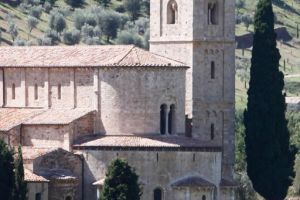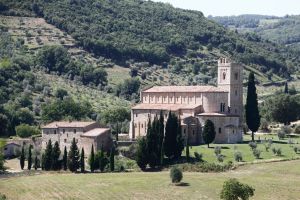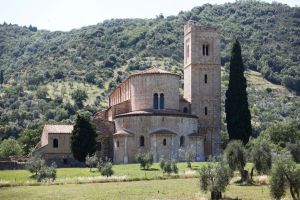The Co-cathedral of the SS. Salvatore in Montalcino
The Abbey of S. Antimo
The Via Francigena was an important pilgrimage route for the faithful who wanted to reach the most important pilgrimage sites, Rome and Santiago de Compostela. Along the way were hostels to take in wayfarers and shrines housing precious relics. The Via Francigena crosses the territory of Montalcino, encountering in its course one of the most important pilgrimage churches: the splendid abbey of Sant’Antimo. Located in the quiet valley of the Starcia River, a tributary of the Orcia, a few kilometers from Montalcino, it was founded according to tradition by Charlemagne as an act of perennial gratitude to God for having shown him in a dream the plant that could cure him of the pestilence that had also struck his retinue on their way back home from Rome. The sovereign ordered a splendid monastery built on the spot where the miraculous herb was found, and had the relics of Saint Anthimus moved there from Sabina, where they had been buried. Historical sources tell us that the monastery already existed in AD 814, since Louis the Pious, successor to his father Charlemagne, enriched the abbey with gifts and privileges. The building was extensively remodeled after Count Bernardo, son of Bernardo of the Aldobrandeschi family, donated his entire fortune to the monks in 1118, as recorded by the inscription on the steps of the high altar. The abbey of Sant’Antimo was a point of reference . . .





